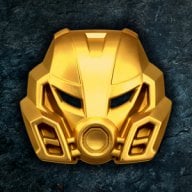First a definition for this question, because there are many kinds of sci-fi out there and they sometimes liberally use cool sounding words without explaining them:
A disruptor is a kind of weapon that weakens, or “disrupts”, either material bonds (breaking a material into molecules), molecular bonds (breaking a molecule into atoms), or atomic bonds (breaking an atomic nucleus into protons, netrons, and free electrons. Almost like instantly turning into plasma).
Temperature can do these things, but the idea behind a disruptor, specifically, is that it happens through some kind of catalyst, rather than brute-forcing with insane amounts of heat.
Would such a weapon physically be possible (even if we don’t know how to make them just yet)?
How would a target realistically behave when hit by a disruptor?
Unfortunately, this is one of those fun ideas that simply won’t ever be possible. Even if we start with the easy one of just breaking chemical bonds, those bonds exist because it reduces the total energy of the system.
To “disrupt” those bonds, energy must be supplied, and to do it for even a small amount of material would require a tremendous amount of energy. Delivering that much energy over a distance just isn’t possible because atmosphere in between would also be “disrupted”. The disrupted material would also fly apart at high speeds and high temperatures. So any type of “ray” or “gun” would just turn into a bomb with a pistol grip trigger. I expect that the user experience testing would have lots of very negative reviews.
1/10: Stupid thing blew up my dog, half my house, and my damn car.
Look I was just trying to deal with a Raccoon stealing my trash, I didn’t plan to destroy half the neighborhood, this product is dangerous and should be illegal.
Dog, house, and car damaged in three different incidents
Klingons are exactly the race to turn something that does that into a real gun. They have all those redundant organs for a reason
Disclaimer: I have nothing more than a secondary education level of physics and a keen interest in physics in general.
It’s common scientific belief that all physical forces are backed up by a field, for example, magnetism by the electromagnetic field, gravity by a gravity field. It would follow that the strong and weak nuclear forces also have corresponding fields.
For a disruptor to work as seen in fiction, you’d probably be looking to disrupt the weak nuclear force, and would need a mechanism to locally change the properties of the corresponding weak nuclear field.
I don’t know if there is such a mechanism available to us currently. Hopefully someone else has a definitive answer.
I would like you to be Secretary of Science in my new cabinet
Is it a nice cabinet? I like a good walnut cabinet with at least 2 shelves.
This cabinet is truly spectacular—one of the finest you’ll ever see. It’s got so many shelves, folks, you wouldn’t believe it. Absolutely tremendous. Each shelf is perfectly designed to showcase your prized possessions. Believe me, the craftsmanship is second to none. These shelves are not just shelves; they’re a statement. They’re big, they’re beautiful, and they hold everything perfectly. This cabinet is going to be a tremendous addition to any room—nobody does shelves like this, folks. It’s going to be huge!
LLM?
This wooden storage cabinet, folks, let me tell you, it’s the best cabinet you’ve ever seen. Tremendous. Solid wood, the finest wood—no one makes cabinets like this anymore, believe me. Big, strong shelves, plenty of space. People are always asking me, “How do you keep things so organized?” Well, it’s this cabinet. It’s luxurious, it’s classy. Everyone wants one, but they can’t have mine. It’s perfect. Built to last, like everything I have. A tremendous cabinet, folks. You’re gonna love it!
Yep. In the style of Trump
A conceivable way could be to disrupt the nuclear force of the target atoms, maybe like an anti-Pion/Gluon ray that self-propagates the reaction through the released energy.
(As we might remember, splitting the atom yields a bunch of energy, and uncontrolled such reactions go Hiroshima)
It might be controlled by sub-particle lensing, probably some kind of magnetic field, to be active at a specific distance.
For the reaction to be contained, either there’s a radially limiting component (air is not particle dense enough to propagate the reaction, or atoms not energy dense enough) or it’s a cascade triggered by the beam which stops when the beam stops (or the reaction gets too far away from it)
As I believe Pions and Gluons are their own anti-particles, I don’t know how we would go about doing this, but hey, that’s for Science!™ to solve.
I could see it being a kind of biological disruptor. Radiation basically does this anyway. It tears apart DNA and interferes with cellular metabolism.
Assuming that string theory is real, perhaps there would be a very specific wavelength of energy that could cause these strings to unravel.
That would cause matter to dissipate at the ultra subatomic level and quite possibly simply convert into heat being the lowest entropy energy level available.
If I wanted to kludge that into a Sci-Fi novel, I would say that it emits string particles that are orthogonal to the strings that they encounter, causing them to break the subatomic strings.
Similar to how cern can create conditions existing closer to the Big bang, perhaps whatever reactor Powers the disruptor does the same thing when it interferes with solid matter.
You would still have quite a bit of energy release when this goes off. Anything it hits should explode roughly with the same amount of energy as if it were exposed to antimatter, but if you need to ameliorate that for story purposes then you could say that those strings then wrap around the orthogonal strings and cancel out, I kind of like how if you have a 1 kilohertz sine wave flowing across the linear line you can cancel that out with a 1 kilohertz sine wave of opposite amplitude flowing along the same line.
As an aside, the ‘ever trustworthy’ Google AI suggests, ‘completely ionizing a human body would require an energy output similar to a very small nuclear explosion’.
I mean, every process requires an energy output similar to a very small nuclear explosion, for some definition of “very small” and “similar”.
I’m going to use this next time my wife complains about my noisy farts.
So…. Wouldn’t a fission bomb be a “disruptor bomb”?
What you describe sounds an awful lot like the reaction in nuclear fission (with neutrons knocking a cascade of other neutrons out of atoms.).
Maybe a disruptor beam is just a neutron beam that causes a cascading reaction in more than just the typical “fissionable” materials. This is where we get the fun technobabble!
Antimatter beam or Strangematter beam. When in doubt, just go increasingly quantum.
Yes. If you know the material’s molecular composition, you can tune a series of lasers to break those bonds with minimal energy input.
You don’t even need the explicit makeup of the material. You can just do a quick calibrating scan consisting of a rainbow sweep of every frequency, while watching to see the scattering pattern of the photons.
Assuming that your laser tuning system makes different tones when it’s producing different wavelengths of light, your weapon’s appearance while firing would be like:
- It makes a sound like VWEEEP and plays a shifting rainbow pattern across the object to be disrupted
- Once calibration is complete, it makes a loud BWAAAAAH sound as the object turns to vapor/powder
The calibration is only like one second. These properties conveniently make it awesome to include in a cinematic depiction such as a sci fi movie.





